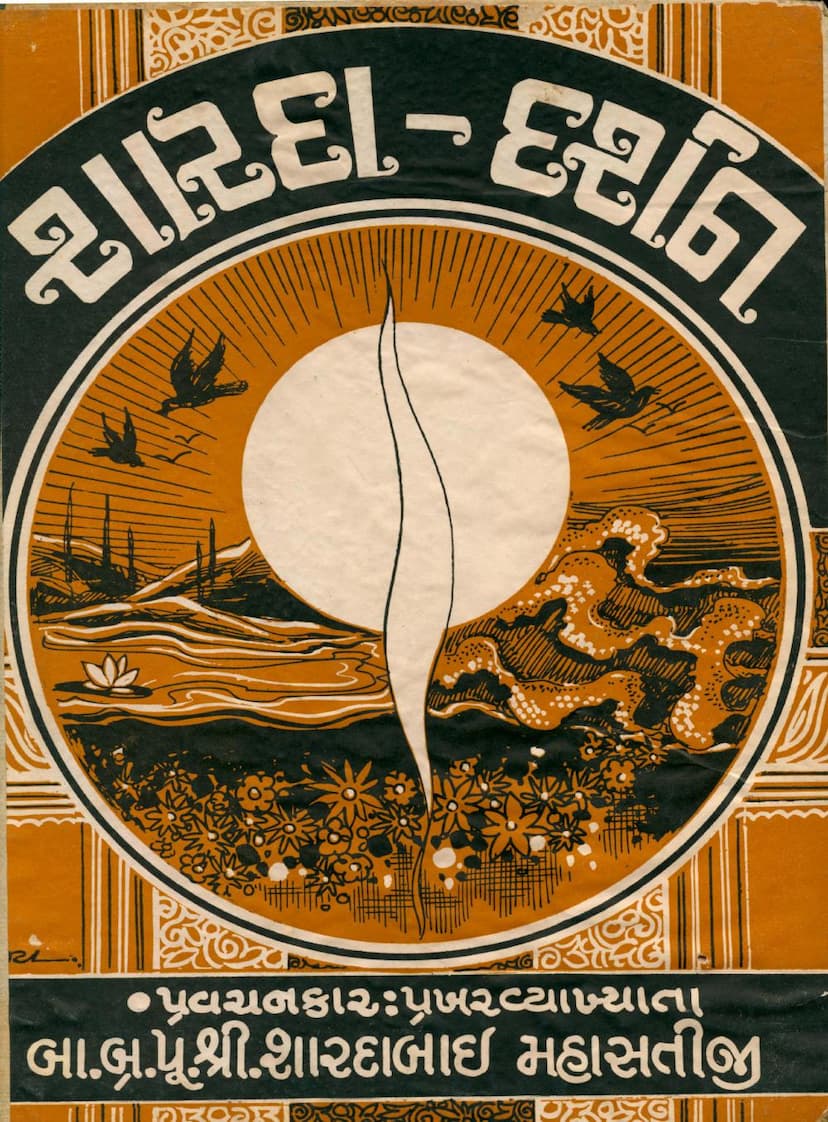Sharda Darshan
Added to library: September 2, 2025

Summary
It appears you've provided a catalog link and page scan of a Jain text titled "Shardha Darshan" by Shardabai Mahasati, published by Mansukhlal Chhaganlal Desai. The text is primarily a collection of discourses by Shardabai Mahasati, based on the Anga Sutra (specifically the Antagad Dasao Sutra) and the Pandav Charitra.
Here's a breakdown of the content based on the provided text, focusing on the summary and key figures involved:
Book Title: Sharda Darshan Author: Shardabai Mahasati Publisher: Mansukhlal Chhaganlal Desai Key Figures and Content:
- Shardabai Mahasati: The central figure, a prominent Jain scholar and preacher ("Prakhar Vyakhyata," "Shasan Dipika," "Atmagyani," "Charitra Chudamani," "Shasan Shiromani"). The book is based on her discourses given during her Chaturmas (a four-month rainy season retreat) in Borivali in Samvat 2033 (which corresponds to the year 1977-78 CE). Her teachings are described as profound, influential, and capable of inspiring spiritual progress.
- Ratnachandraji Maharaj Saheb: Revered as the late Acharya, Gachhadhipati, and Gurudev of the Khambat sect. Shardabai Mahasati is noted as his disciple ("Sushishya").
- Kamalabai Mahasati and Sangitabai Mahasati: Identified as the editors ("Sampadak") of the discourses, and also Shardabai Mahasati's disciples ("Sushishya").
- Mansukhlal Chhaganlal Desai: The publisher of the book, who expresses his gratitude and dedication to publishing more works by Shardabai Mahasati in his "Prakashak ka Nivedan" (Publisher's Note). He mentions having previously published "Sharda Shikhar," a collection of discourses from her 2032 Chaturmas in Ghatkopar.
- The Discourses: The book's primary content is based on Shardabai Mahasati's lectures, which cover two main themes:
- Anga Sutra's Gajasukumal Adhikar: This likely refers to a section discussing the life and teachings related to Gajasukumar, a significant figure in Jainism known for his attainment of liberation.
- Pandav Charitra Adhikar: This section focuses on the stories and teachings derived from the lives of the Pandavas, a prominent family in Hindu epics who also have a significant presence in Jain narratives, often highlighting their righteousness and spiritual journey.
- Themes and Impact: The discourses are described as "rasprad" (interesting), "bodhdayak" (informative), and "vairagyasabhar" (filled with renunciation). Shardabai Mahasati's style is noted as "sachot" (accurate) and "joshili" (energetic), captivating her audiences. Her teachings inspired significant spiritual activity, including rigorous penance ("Tapasya") and vows during the Borivali Chaturmas, with many lay followers undertaking significant austerities.
Overall Purpose and Tone:
The text is a compilation of spiritual discourses aimed at educating and inspiring the Jain community towards righteous living, spiritual practice, and devotion. The publisher's note emphasizes the importance of these teachings for the welfare of souls and the propagation of Jain principles. The various "Nivedan" (notes) from the Borivali Jain Sangh and the publisher highlight the devotional and philanthropic spirit behind the creation and distribution of this book.
The introductory pages also include tributes and dedications to various individuals and families, which is common in religious publications, acknowledging their contributions or commemorating their memory.
This summary provides a foundational understanding of "Shardha Darshan" based on the provided text. To fully grasp the nuances of the content, one would need to delve into the actual discourses themselves.